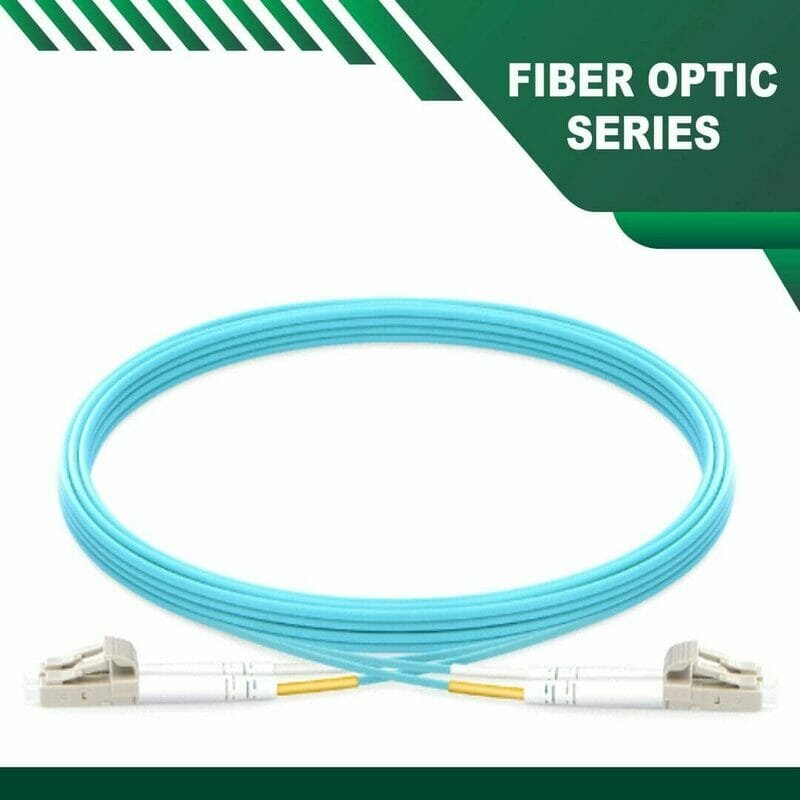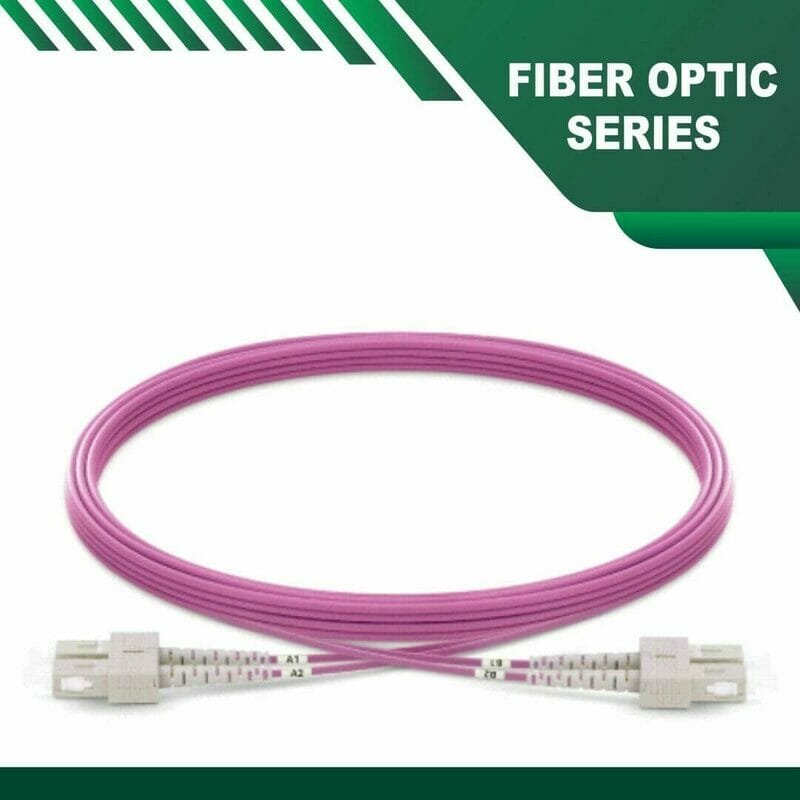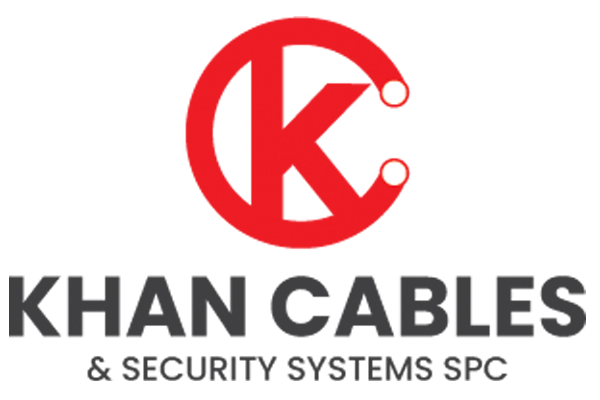Understanding the Types of Fiber Optic Cables in Networking by tmt global oman

Introduction to Fiber Optic Technology
Fiber optic technology has emerged as a pivotal component in modern networking and communication systems. This technology utilizes thin strands of glass or plastic, known as optical fibers, to transmit data as light signals. Unlike traditional copper cables, which transmit electrical signals, fiber optic cables provide a significant advantage by offering higher bandwidth and allowing for longer transmission distances without loss of signal quality. This fundamental difference makes fiber optics an increasingly popular choice for a variety of applications, ranging from internet service providers to telecommunication networks.Fiber Optic Cables in Networking



The basic principle behind fiber optics lies in the phenomenon of total internal reflection. When light signals are transmitted through these optical fibers, they reflect off the internal walls of the fiber core, remaining contained within the fiber and avoiding interference from external factors. This remarkable ability to maintain signal integrity under diverse environmental conditions is one of the key reasons fiber optic technology is rapidly being adopted in both commercial and residential spaces. Moreover, as data demands continue to surge, fiber optics provides the necessary scalability to meet this growth efficiently.
Another noteworthy aspect of fiber optic technology is its resilience against electromagnetic interference, which is a common challenge faced by traditional copper cables. By employing fiber optics, networks can ensure enhanced security and reliability, making it an ideal solution for critical communications in sectors such as finance, healthcare, and government. Furthermore, the environmental benefits of fiber optic cables, which require less energy to transmit data over long distances, contribute to their increasing relevance in sustainable networking strategies. As we delve deeper into the types of fiber optic cables, it becomes crucial to understand the foundational principles that govern this innovative technology.
What are Fiber Optic Cables?
Fiber optic cables are advanced communication technologies that utilize light to transmit data at high speeds over long distances. Unlike traditional copper cables, which rely on electrical signals for data transmission, fiber optic cables use strands of glass or plastic, known as optical fibers, to carry pulses of light. This method of data transmission offers significant advantages, including higher bandwidth, improved performance over longer distances, and reduced signal degradation compared to copper cables.
The structure of a fiber optic cable comprises several key components. Central to this structure is the core, which is the thin glass or plastic strand that conducts light. Surrounding the core is the cladding, which possesses a lower refractive index than the core, allowing the light to be reflected internally and transmitted along the fiber. The outer protective layer, known as the jacket, serves as insulation and protection against environmental factors. This layering not only aids in data transmission but also enhances the robustness and durability of the cable.
Data transmission through fiber optic cables occurs via modulation of light signals, which can be generated by lasers or light-emitting diodes (LEDs). When data is transmitted, the light signal travels through the core, reflecting off the cladding’s inner surface due to total internal reflection. This principle enables the efficient transfer of large amounts of information simultaneously, making fiber optics a preferred choice for telecommunications, internet connections, and data networking applications.
Overall, fiber optic cables represent a revolutionary advancement in the field of networking, distinguishing themselves from conventional copper cables through their unique materials and transmission methods. Their ability to handle vast data loads with speed and efficiency underscores their growing importance in modern communication systems.
Understanding the Types of Fiber Optic Cables in Networking
Introduction to Fiber Optic Cables
Fiber optic cables are essential components in modern networking, offering fast and reliable data transfer. They use thin strands of glass or plastic fibers to transmit light signals, making them more efficient than traditional metal cables. Understanding the different types can help you choose the right cable for your specific needs.
Types of Fiber Optic Cables
There are primarily two types of fiber optic cables: single-mode and multi-mode. Single-mode fiber optic cables have a smaller core diameter (approximately 8 to 10 microns) and are designed to carry light directly down the fiber, which allows for increased distance of transmission—typically up to 40 kilometers or more. This type is ideal for long-distance communication, such as in telecommunications.
On the other hand, multi-mode fiber optic cables have a larger core diameter (about 50 to 62.5 microns) and allow multiple light modes to pass through. This leads to higher bandwidth but shorter transmission distances, usually within 300 to 2,000 meters. Multi-mode cables are better suited for local area networks (LANs) and data centers where the distances are relatively short.
Choosing the Right Cable for Your Network
When selecting fiber optic cables, consider factors such as distance, bandwidth requirements, and installation environment. For instance, if you’re setting up a network that spans large distances, single-mode cables could be the optimal choice. Conversely, for shorter reach applications like office buildings or data centers, multi-mode cables might be sufficient.
In conclusion, understanding the distinct types of fiber optic cables in networking can significantly affect the performance and efficiency of your data transmission. Make an informed choice based on your networking needs and requirements.
Single-Mode Fiber Optic Cables
Single-mode fiber optic cables are a crucial component in modern networking, particularly for applications requiring long-distance data transmission. These cables feature a narrow core diameter, typically around 8 to 10 microns, which allows light to travel straight down the fiber without significant reflection or scattering. This direct transmission process minimizes loss and enables efficient communication over extensive distances, often exceeding 50 kilometers without the need for signal boosters.
One of the primary characteristics of single-mode fibers is their ability to support high bandwidth capacities. The reduced modal dispersion, achieved through the narrow core, facilitates the delivery of larger amounts of data at faster speeds, making them ideal for telecommunications and internet providers. As networks increasingly demand higher data rates, single-mode fibers remain a preferred choice due to their superior optical performance.
Moreover, single-mode fiber optic cables are particularly advantageous in scenarios where infrastructure is planned for future expansions. Their robust capabilities ensure that they can handle increased traffic as demand rises, thus offering a forward-looking solution for network design. Environments such as urban centers, data centers, and long-haul connections widely utilize these cables for their unmatched performance and reliability.
In terms of installation, single-mode fiber optic cables are generally more intricate to handle than their multimode counterparts. However, their deployment leads to lower maintenance costs over time due to their durability and efficiency. Notably, they require specific connectors and termination processes, which can contribute to increased setup costs initially. Nevertheless, their long-term benefits far outweigh these initial expenses.
In conclusion, single-mode fiber optic cables stand out for their ability to facilitate long-distance communication with minimal loss, high bandwidth, and future-proof networking capabilities. As demand for efficient and reliable data transmission continues to grow, their significance in the networking sphere is set to increase correspondingly.
Multi-Mode Fiber Optic Cables
Multi-mode fiber optic cables are a vital component in networking, characterized by their structure that allows multiple light modes or rays to propagate simultaneously. These cables utilize a larger core diameter, typically ranging from 50 to 62.5 micrometers, which enables the transmission of multiple light signals. This structural design makes multi-mode fibers particularly effective for short-distance communication, often spanning distances up to 2 kilometers, depending on the type of multi-mode fiber used and the application.
The primary benefit of multi-mode fiber optic cables lies in their ability to transmit data at high speeds, which is essential in local area networks (LAN). They are less expensive compared to single-mode fibers and are often favored in environments where high bandwidth is required over shorter distances. For this reason, multi-mode cables are commonly implemented in data centers, enterprise networks, and within buildings. Their cost-effectiveness also extends to installation, as multi-mode fibers typically use inexpensive light sources like LEDs, which further lowers overall network deployment costs.
In terms of applications, multi-mode fiber optic cables are ideal for systems that require data transmission speeds exceeding traditional copper cables. They are frequently utilized in video conferencing, high-definition video applications, and internal data transfer between servers. Additionally, multi-mode cables support various networking protocols, including Ethernet and Fibre Channel, thereby enhancing their versatility in modern networking infrastructures.
In conclusion, multi-mode fiber optic cables serve an essential role in networking by facilitating high-speed data transmission over shorter distances. Their advantages, including cost-efficiency and ease of installation, support a wide range of applications, making them a popular choice among network professionals.
Comparison between Single-Mode and Multi-Mode Fiber
Fiber optic cables are categorized into two primary types: single-mode fiber (SMF) and multi-mode fiber (MMF). Understanding the distinctions between these two types is essential for optimizing network performance and meeting specific communication needs.
Single-mode fiber is designed to carry light directly down the fiber without significant reflection, which allows for higher bandwidth over longer distances. This type of fiber typically has a small core diameter, about 8 to 10 microns, enabling it to transmit data at speeds that can exceed 100 Gbps over distances of up to 40 kilometers or more. The minimized dispersion and low attenuation characteristics of single-mode fibers make them ideal choices for long-haul communication systems and telecommunications.
In contrast, multi-mode fiber features a larger core diameter, generally around 50 to 62.5 microns, which allows multiple light paths or modes to propagate simultaneously. While this enables efficient data transmission and can support high-bandwidth applications, multi-mode fiber is limited in distance—typically around 300 to 400 meters for high-quality transmission rates. This limitation arises due to modal dispersion, where different light modes arrive at the receiver at varying times, potentially causing signal degradation.
Cost is another critical factor when choosing between the two cable types. Single-mode fiber is generally more expensive due to its complex manufacturing processes and the cost of the associated transceivers. On the other hand, multi-mode fiber can be more economical for short-distance transmissions where lower bandwidth is acceptable; thus, it is often used in local area network (LAN) applications and data centers.
In conclusion, the selection between single-mode and multi-mode fiber optic cables ultimately hinges on the specific networking needs, including performance requirements, budget, and distance considerations. Understanding these differences will aid in making informed decisions for efficient network design.
Factors to Consider When Choosing Fiber Optic Cables
When selecting fiber optic cables for networking, several critical factors must be taken into account to ensure optimal performance and future-proofing. The first aspect is distance. Fiber optic cables are designed to transmit data over varying distances, with two main types being Single-Mode Fiber (SMF) and Multi-Mode Fiber (MMF). Single-Mode Fiber is typically preferred for long-distance applications as it minimizes signal loss over extensive spans, while Multi-Mode Fiber is suitable for shorter distances, typically within a building or campus.
Another important factor is bandwidth requirements. Different applications place diverse demands on bandwidth, so understanding the data transmission needs of your network is essential. For instance, if high-capacity networks are required for video streaming or data-heavy applications, choosing a fiber optic cable with a higher bandwidth capacity is paramount. Assessing current and planned data usage will facilitate selecting the most appropriate fiber optic cable type.
Moreover, the environment in which the fiber optic cables will be installed plays a significant role in the selection process. Cables designed for outdoor use are constructed with protective jackets that are weather-resistant and can endure harsh conditions, while indoor cables are typically simpler, focusing on flexibility and minimal additional protection. Consideration should also be given to the layout of the installation site, including possible interference from electrical equipment or other physical barriers that could affect signal quality.
Lastly, future scalability is an often overlooked consideration. As networking demands evolve, the chosen fiber optic cables should accommodate potential growth. Investing in higher capacity fiber solutions, even if not immediately necessary, ensures that the networking infrastructure can expand without requiring complete replacements in the future. By thoroughly evaluating these factors, individuals and businesses can make informed decisions that align with their networking requirements.
Applications of Fiber Optic Cables in Networking
Fiber optic cables have become integral to modern networking, offering high-speed data transmission and enhanced performance across various applications. One of the primary sectors where fiber optics are applied is telecommunications. In this domain, fiber optic cables facilitate the delivery of broadband internet services, telephone communications, and television programming. Their capability to transmit large volumes of data over long distances with minimal loss makes them preferable to traditional copper wires, leading to improved connectivity and reliable service for consumers and businesses alike.
Another significant application of fiber optic cables is in data centers. These facilities rely heavily on swift data transfer rates and high bandwidth to manage vast amounts of information effectively. The use of fiber optics in data centers ensures that data can be moved quickly between servers, storage systems, and user endpoints. This is crucial for cloud computing, where users demand instantaneous access to their data and applications. By utilizing fiber optic technology, data centers are better equipped to handle increasing workloads and ensure optimal performance without latency issues.
What are the 2 types of fiber optic cable
Additionally, fiber optic cables play a vital role in smart building technologies. In these eco-friendly and technologically advanced structures, fiber optics enable seamless connectivity for various systems, including security, lighting, and energy management. As smart buildings incorporate numerous connected devices, the need for high-speed internet becomes paramount; fiber optics fulfill this requirement, enhancing operational efficiency and user experience. This integration of fiber techniques not only improves communication within the building but also contributes to energy savings and operational sustainability.
Overall, fiber optic cables are revolutionizing networking across telecommunications, data centers, and smart buildings. Their widespread adoption is indicative of a shift towards faster, more reliable communication methods that are crucial in today’s data-driven world.
Trends in Fiber Optic Cable Technology
Fiber optic cable technology has experienced significant advancements in recent years, driving a multitude of trends that shape the future of networking. One notable trend is the push towards increased data rates. As the demand for high-speed internet and data transmission grows, researchers and manufacturers are developing fiber optic cables capable of handling greater bandwidths. Innovations like Dense Wavelength Division Multiplexing (DWDM) allow multiple signals to be transmitted simultaneously over a single fiber, vastly enhancing throughput and efficiency in data-heavy environments.
In addition to increased data rates, there is a concerted effort to develop new materials that improve performance and durability. Traditional glass fibers are now being complemented with new polymers and hybrid materials that enhance flexibility and reduce weight, making installation easier and more cost-effective. These innovative materials also exhibit resistance to environmental factors, ensuring longevity and reliability in various operational contexts. This material advancement supports the deployment of fiber networks in both urban and remote areas, facilitating broader accessibility to a high-speed connection.
types of fiber optic cable connectors
Moreover, the integration of smart technologies within fiber optic systems is another trend transforming networking capabilities. Smart fibers can include built-in sensors that monitor performance and detect issues in real-time, leading to proactive maintenance and reduced downtime. This intelligent approach maximizes network efficiency and security, aligning with modern demands for resilience in data infrastructure.
Collectively, these trends underscore a dynamic shift in fiber optic cable technology, with ongoing research and development positioned to further enhance the landscape of networking. As these advancements unfold, they will continue to play a pivotal role in facilitating the global transition to faster, more reliable internet services, ultimately shaping the future of digital communication and connectivity.
Conclusion and Future of Fiber Optic Cables
In reviewing the various types of fiber optic cables discussed, it is clear that these cables have transformed networking by providing superior speed and reliability compared to traditional copper alternatives. Single-mode and multimode cables serve different purposes, catering to a wide range of applications from telecommunications to data centers. Understanding the distinctions between these cable types is crucial for effective network design and implementation.
As we look to the future of fiber optic technology, several developments are anticipated that promise to further enhance connectivity. First, advancements in fiber optic manufacturing processes are expected to lead to more efficient production, reducing costs and increasing accessibility. The integration of new materials and technologies will likely result in even higher transmission speeds and greater bandwidth capabilities. Moreover, innovations such as photonic crystal fibers could revolutionize the way data is transmitted, allowing for unprecedented performance and efficiency.
different types of fiber connectors advantages and disadvantages
Additionally, the ongoing expansion of smart cities and the Internet of Things (IoT) necessitates robust networking solutions that fiber optics can provide. The demand for faster and more reliable internet services continues to grow, driving the adoption of fiber optic cables across various sectors including healthcare, education, and transportation.
In conclusion, the longevity and ongoing relevance of fiber optic cables in networking will be shaped by continuous innovation and adaptation to emerging technologies. The landscape of data transmission is evolving, and fiber optics will undoubtedly play a vital role in achieving the future connectivity solutions demanded by our increasingly digital world.

